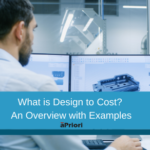
According to a McKinsey article, more than 70 countries are committed to achieving net-zero emissions and almost half of Fortune 500 companies have made commitments to reduce emissions by 2030. As organizations ramp up their sustainability goals to reduce their carbon footprints, it prompts several questions. What sustainability management software should we consider for this effort? How can it help us minimize our carbon emissions and waste while meeting customers’ wants and needs? Will we still be profitable after implementing such software?
In this article, we will define sustainability management software. We also will outline considerations when implementing sustainability management software as well as provide tips for selecting the best software solutions.
But first, what exactly is sustainability management? Gartner defines it as “a management discipline embracing corporate strategies, operational capabilities, competencies, behaviors, and cultures. It focuses on products, services, the enterprise, and the supply chain, and it seeks to optimally balance organizational performance and outcomes across economic, environment, and social criteria over all time scales.”
While sustainability management is important, in a manufacturing business, you can influence and reduce your carbon footprint further by reducing the environmental impact of the products you manufacture. This effort is accelerated with a manufacturing insights solution capable of identifying parts design or manufacturing processes where there is material waste, excess energy consumption, or other similar factors that result in a higher carbon footprint.
What is Sustainability Management
With so many moving parts in manufacturing, managing them can be a formidable task. Ensuring that they are sustainable adds to the complexities. Sustainability management monitors, assesses, and manages all facets of the operations for sustainability. More importantly, it can pull critical data such as raw material waste, electricity usage, and fuel costs into a clear and accurate dashboard with a manufacturing insights solution for sustainability.
Cloud-based solutions enable greater communication and collaboration, streamlining workflow. Such solutions store and track all related data, with the ultimate goal of putting your sustainability strategy into action. Equally important, it should provide visually compelling, easily understandable analytics and insights to benchmark sustainability initiatives and further support sustainability performance.
You don’t want to put the cart before the horse. Therefore, it is essential that you have a manufacturing insights tool that can calculate the carbon footprint of a product before it is made. It also is vital to understand the key drivers that contribute to higher carbon emissions so that they can be reduced prior to manufacturing. From that point on, sustainable management of that product will come into play. But without laying the groundwork for a sustainable product first via manufacturing insights, sustainable management won’t be impactful.
In the best of all worlds, it will ensure that your carbon footprint is reduced AND improves manufacturability while keeping costs in line. From an ROI standpoint, it can serve as a compelling reporting tool for internal and external stakeholders who want to measure their environmental, social, and governance (ESG) investment to determine if there is corporate sustainability.
Next, let’s explore several manufacturing insights features that can build a good foundation for effective sustainability management.
aPriori Sustainability Infographic
Three Sustainability Software Considerations
Not all sustainability software is the same. Most manufacturers have good intentions when it comes to more sustainable practices. However, just 4% succeed in this area. Many factors contribute to the high failure rate such as lacking a strategy, being hesitant to invest in this area, and not understanding the regulatory requirements.
A good sustainability software solution can address these obstacles. More importantly, manufacturers should expect more. Consider the following attributes of a sustainability solution that will help you lower your carbon footprint and improve manufacturability and manufacturing profitability:
- Speed: Time is money. Manufacturers cannot afford delays in getting to market. A good sustainability solution provides actionable intelligence and real-time feedback to identify, analyze, and address sustainability (and manufacturing and cost) issues early in the design process, saving time and money.
- Precision: A design flaw or production issue can be costly. Manufacturers need a sustainability solution that delivers precise results. It should operate in tandem with configurability if the calculation data needs to be refined. What’s more, you want confidence in the numbers the solution is providing to ensure that you truly are lowering your carbon footprint.
- Transparency: Manufacturers are feeling more pressure than ever to be accountable. Regulatory requirements demand it. Customers expect it as well and are willing to pay more if they have a guarantee that a product is sustainable. A good sustainability solution will provide that transparency throughout the product lifecycle. Design can substantiate lower environmental impact materials and production usage. The supply chain can be traced in greater detail, indicating partnerships with sustainable suppliers and reduced supply chain channels to further lower the carbon footprint. From an ROI perspective, such transparency enables manufacturers to authenticate the financials, allowing them to provide auditable and verifiable numbers for internal and external stakeholders.
Three More Ways to Enable Effective Sustainability Management
Though we are highlighting three important considerations, there are a few others that can mean the difference between a sustainability solution that optimizes your product and goals and one that falls short.
- All-in-one Solution: Utilizing a solution right out of the box that covers sustainability, cost, and manufacturability in one step is ideal, particularly if it can be as configurable as you desire. It should allow you to run trade-off analyses, comparing CO₂ equivalent emissions with cost, to identify the areas that are the biggest contributors to them.
- Highly detailed manufacturing simulation: The more granular you can get in your manufacturability as well as cost and carbon emissions contributors, the better. It should be fully automated to calculate CO₂ equivalents from 3D CAD data without the need for manual setup of factory routing or manual data entry. Moreover, the calculations should be consistent and highly repeatable with documented assumptions to support transparent and traceable reporting-
- Actionable recommendations: What good is feedback without actionable recommendations or practical alternatives? Your solution should not just be a yardstick for sustainability. It should provide sustainable recommendations for the appropriate materials and manufacturing processes as well as the best locations to source and produce materials and parts, respectively. Whether it is designing (i.e.-shape, weight, material trade-offs, reuse opportunities, etc.), manufacturing (i.e.-baselining, lower impact process routing, etc.,) or sourcing (i.e.-make vs. buy, material sourcing, etc.), an impactful manufacturing insights tool will offer these capabilities, which in turn will better support sustainability management.
A solution like aPriori provides faster analysis and more accurate manufacturing process modeling via 3D CAD data. You can easily identify design trade-offs between CO₂ and cost while ensuring manufacturability. The cherry on top? Gaining proven manufacturing insights that can model CO₂ equivalents. aPriori measures greenhouse gas (GHG) emissions throughout a manufacturer’s supply chain (Scope 3).
Sustainability management is only as good as the sustainability manufacturing insights behind it. aPriori provides greater transparency and precision into what kind of carbon footprint you might potentially leave and how you can refine products to reduce it. It empowers manufacturers to make data-driven decisions affecting sustainability, manufacturability, and cost without sacrificing one over the other.
What are you waiting for? Make sustainability with manufacturability and profitability a reality today.





